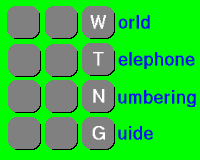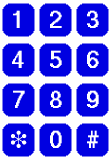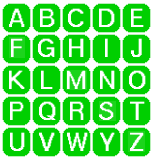


 Main Page
Main Page
 Calendar
Calendar
 Glossary
Glossary
 History
History
 Regional Services
Regional Services
 Special Services
Special Services
 What's New
What's New

|
|
|
| Updated 5 February 2018 | By Country Code | By Country Name | Other WTNG pages | Acknowledgements | ||

|

|

|
 Main Page
Main Page
 Calendar
Calendar
 Glossary
Glossary
 History
History
 Regional Services
Regional Services
 Special Services
Special Services
 What's New
What's New
|
|
||
|
|
South Africa | +27 | ||||
Area Code: 2-5 digits Subscriber Number: 3-7 digits Trunk Prefix: 0 International Prefix: 00 (formerly 09)Sum of Area Code and Subscriber Number will be 9 digits (exclusive of trunk prefix).
Regulator ICASA has published various Number Portability Regulations and associated reports.
See: ICASA Numbering Plan documents
Other mobile numbering developments up to 2010 include:
Number range Carrier/allocation ============ ================== +27 76 reserved - carrier unknown +27 79 reserved - carrier unknown +27 81 Telkom 8ta (pronounced Heita) mobile +27 84 Cell C +27 87 reserved - carrier unknownNextel (new fixed/wireline operator) used Telkom numbering ranges. Mobile number portability is in effect, therefore numbers may not necessarily indicate the current carrier belonging to a wireless number.
(additional info courtesy Pekka Pihlajasaari)
Source: Telkom implements changes in dialling procedures (Telkom press release, 29 September 2006)
(News item courtesy Risto O. Nykänen)
Source: "Telkom implements 010 area code in Johannesburg", Mail & Guardian 29 April 2008
Telkom news releases of November 2001 previously indicated the original intention to introduce this overlay code.
South Africa Government Gazette 26471 - Notice of intention to make regulations on the numbering plans
Also, ITWEB article of 21 June 2004 Draft numbering plan looks to the future
Closed 10-digit dialling and number portability were presumably postponed.
Other articles from 2002 on 10-digit dialling proposals:
ITWEB article of 29 September 2003: 10-digit dialling may remain on backburner
ITWEB article of 9 October 2002, Telkom refutes 10-digit dialling rumours - where Telkom refuted rumours that there would be extra charges to callers not using 10-digit local dialling.
Reference: ICASA document (via ITU).
Regulator ICASA intended that 10-digit dialling would be mandatory for local as well as long distance calls. However, the mandatory phase was not implemented.
Permissive operation of either 7-digit or 10-digit local calling began on 6 November 2001.
Mandatory dialling of 10-digit format for all calls would have taken effect 8 May 2002 under the original plan.
However, ICASA announced 4 April 2002 that the parallel operation of 10-digit dialing would continue until six months after "promulgation of the numbering plan regulations". Source: News 24: "Icasa extends dialling phase-in"
Vodacom added +27 72 to its existing +27 82.
MTN added +27 73 to its existing +27 83.
+27 7 and +28 8 ranges are intended for mobile numbers under proposed future national numbering plans.
Source: ICASA announcement (archive of 7 May 2005)
Source: ICASA Notice 1424 of 2001 One element was the introduction of a closed numbering plan where 10-digit dialling would be mandatory for all geographic numbers by 08 May 2002. Initial digits 2 through 9 would have been removed from the numbering plan for future assignment.
Also, an area code overlay in Gauteng Central Area (Johannesburg) was proposed, +27 10 added to the +27 11 region.
Source: South Africa Cape and Garden Route (as of February 1999).
Reference: Government Gazette Number 18220, 22 August 1997, General Notice 1228 of 1997.
Old numbers --> New Numbers conversion:
21xxxx --> 421xxxx 221xxx --> 5221xxx 24xxxx --> 424xxxx 30xxxx --> 430xxxx 32xxxx --> 432xxxx 35xxxx --> 435xxxx 36xxxx --> 436xxxx 41xxxx --> 441xxxx 45xxxx --> 525xxxx 47xxxx --> 447xxxx 48xxxx --> 448xxxx 49xxxx --> 529xxxx 61xxxx --> 526xxxx 62xxxx --> 526xxxxDialling codes to individual centres were also phased out, in favour of codes covering larger regions.
Source: ANC news bulletin (search for title: MANY BLOEMFONTEIN TELEPHONE NUMBERS TO CHANGE).
Source: ANC bulletin (search for title: ELECTRONIC TELEPHONE EXCHANGE FOR WINBURG).
Government ministry responsible for telecommunications is Department of Communications.
Telecommunications regulator is ICASA.
Also, many corrections and news tips were courtesy Sergiu Rosenweig.
 Return to Top
Return to Top